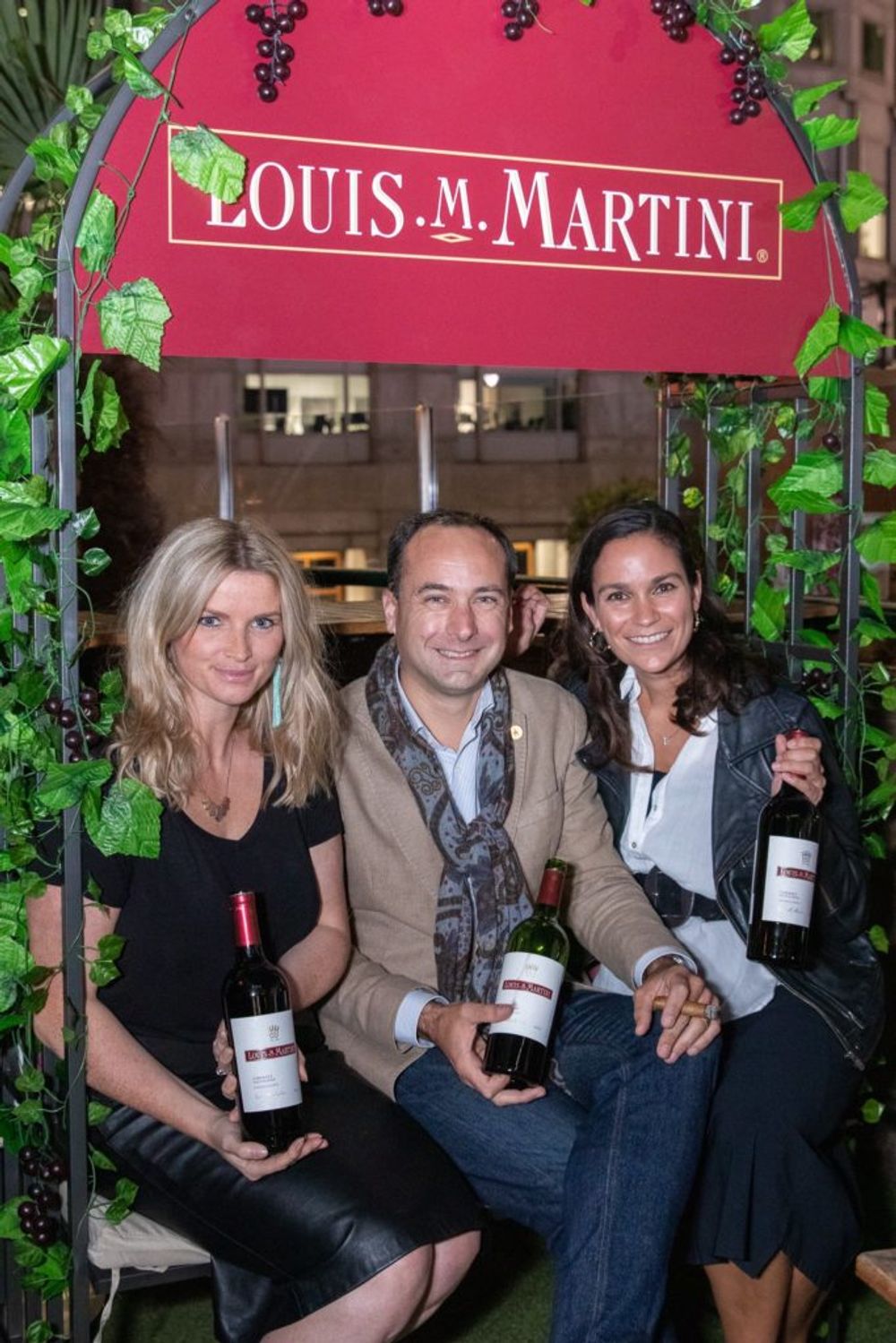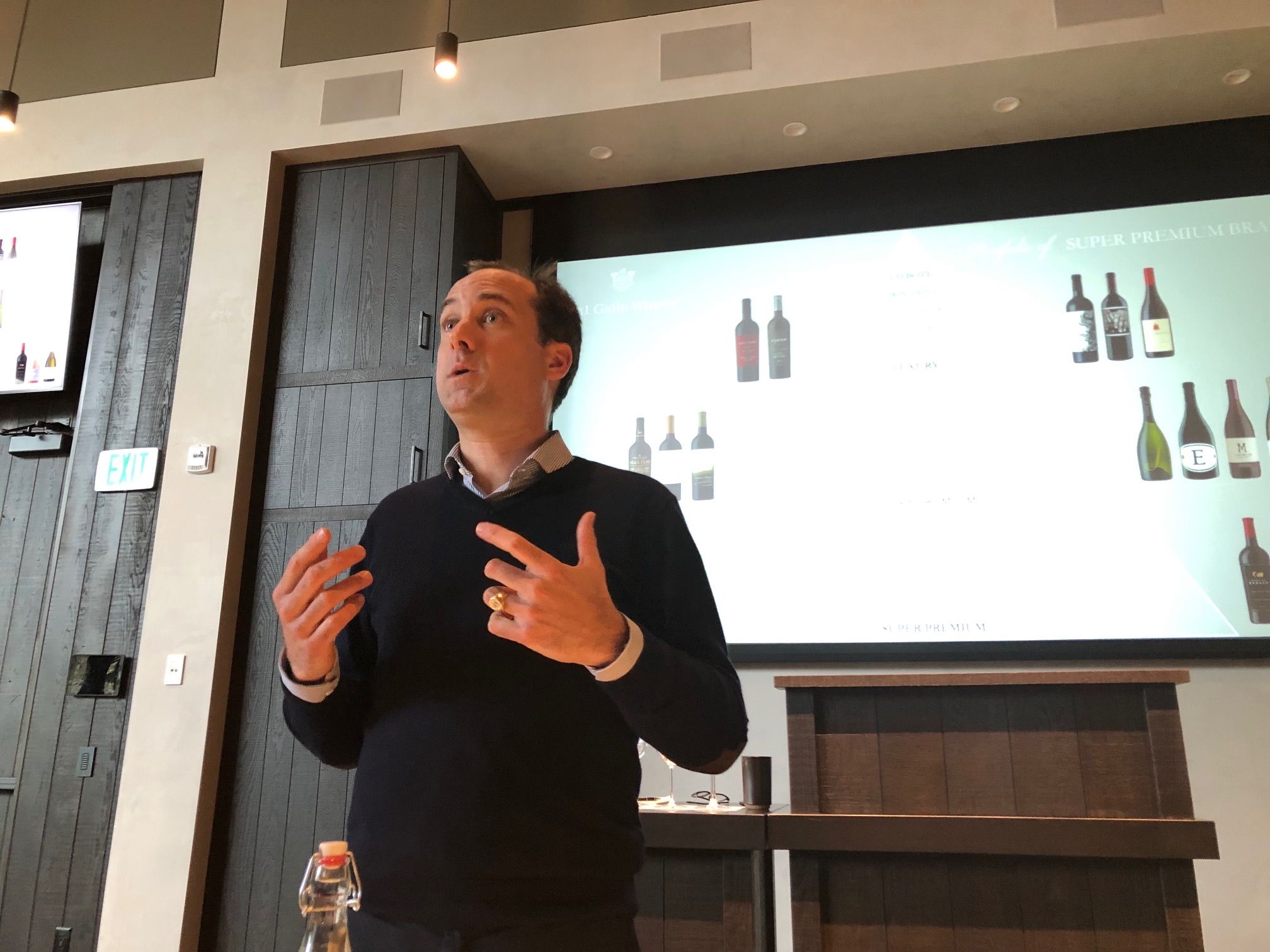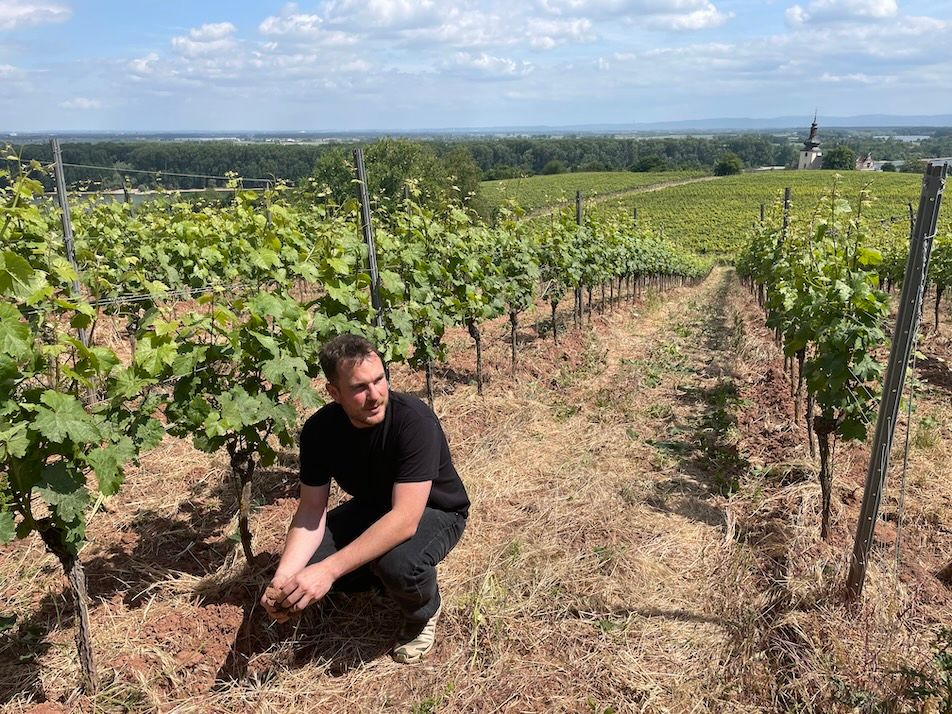There is no doubting that E&J Gallo now has the wines at the top of the premium ladder in its portfolio. The challenge is to making sure buyers and sommeliers in the premium on-trade know what they can have to choose from, explains Edouard Baijot MW, Gallo’s head of fine wine for EMEA.
The super premium category has become a major focus for Gallo in recent years. Can you give a recap on why that is and the top line steps it has taken to get a strong foothold in the super premium category?
To meet increasing consumer demand for premium wine, E. & J. Gallo Winery offers a world class portfolio of California and international wines. Our plan has been to invest significantly in highly regarded vineyards from the best California AVAs, world-class wineries and iconic brands to grow our presence in the Super Premium category.
How would you define the super premium category?
Each company has a different definition for super premium, but at Gallo we follow the IRI segmentation in the US market which defines super premium wines sold above £10 consumer price.
In our mind Super Premium wines should come from premium growing regions and offer customers a distinct personality and wine style.
What steps in particular have you taken in the UK to build Gallo’s presence/ profile and reputation within the super premium category?

Dave Phinney has built up a cult following for his Orin Swift wines
The diversity of our portfolio both in terms of wine growing regions and price positioning gives us the opportunity to build a multi-channel approach for our s super premium brands. Some of our brands such as Frei Brothers Sonoma Reserve and Columbia Winery (from Washington) fit perfectly within premium national retailers or national specialists, while Louis M. Martini or Talbott Vineyards respond to the needs of independent wine specialists and more iconic wines such as Orin Swift meet the expectations of private clients or fine dining venues.
What has proved particularly successful?
The launch of Orin Swift in 2018, which included a visit to the UK by winemaker Dave Phinney, was particularly successful and helped to establish the brand locally in the luxury segment.

Iconic labels are all part of the appeal of Orin Swift’s wines
All the events we organise to talk about our wines and interact with consumers are opportunities to exceed people’s expectations and perception about our portfolio.
Whether it’s a pop-up bar for MacMurray Estate Winery over the 4th of July weekend, or intimate ‘Steak and Cabernet’ nights for Louis M Martini or launching a California wine terrace, every time consumers have an opportunity to try our wines and connect with the stories of our wines, we see a marked increase in sales at these locations.
Any good case studies of restaurants and groups that you have been able to build your super premium wines with?

Edouard, Marie Weiss and Hannah Fagan of the EMEA super premium team, at the Boisdale Terrace launch party
We have worked closely with various accounts to deliver experiences that excite consumers and trade. Like the activity we have been doing with Boisdale Restaurants group. In July we hosted a themed wine dinner which pitted American and Scottish surf and turf dishes against each other with guests invited to vote for their favourite. We also worked on a special Independence Day Menu paired with wines from the Californian Collection, and in September we opened the Californian Wine Terrace which has provided customers with the ideal location to sample the range of our portfolio and discover new brands. All of this has had a big impact on the sales of these listings.
What has been the key to winning over those customers and achieving the success you wanted in those restaurants?
Consumers are not only looking for wines that deliver stylistically or from specific regions, but they also want to enjoy a unique experience. All initiatives that provide something different is beneficial for our partners. Our environment is highly competitive, so differentiation is key to our success.
What styles of super premium Californian wines are you finding work best with trade buyers and their guests?
The reason working across such a diverse portfolio is exciting is we’re able to provide for a spectrum of offerings to meet buyers’ needs. While our top California Cabernets are doing very well with high demand in the UK and in many markets across the EMEA, interest is also rapidly growing for our cool climate Pinot Noir from regions such as the Santa Lucia Highlands in the Central Coast of California.
Members of the trade are becoming more conscious of the diversity of terroir in California -The Louis M. Martini Monte Rosso Cabernet Sauvignon for example has a strong sense of place with a pronounced graphite character, a fresh palate with incredible acidity for the region and a long persistent finish, which sommeliers in Europe love.

Monte Rosso vineyards which are part of the Gallo estates
What sort of price points are working in the super premium category?
This all depends on the channel. For national retailers the sweet spot is around £15 while for independents it is more around £18-20, and above £50 for private clients. For the on-trade it is around £50-£60 a bottle.
Is wine by the glass a key part of the super premium category growth – how have you developed that?
It is difficult to reach a significant amount of volume in the on-trade without by the glass programs. It is important to keep in mind that most of the by the glass offerings today are made with entry-level wines or wines below £10 and it is difficult for us to compete at these prices.
However, more and more restaurants now work with wine preservation systems such as Enomatic dispensers which permit them to extend their by the glass offerings to super premium wines. In 2020 most of our investment in the on trade will be allocated to building our presence in this category.
How has the overall year been in terms of trading within the super premium category? Generally, and for Gallo.
The super premium category is growing and will continue to grow as consumers develop a deep interest in exploring the wine world and are seeking out quality wines from around the world. We have seen strong success with Orin Swift, but also in the on-trade with significant growth on brands such as MacMurray Estate Vineyards, Whitehaven and Columbia Winery.

Boisdale’s Ranald Macdonald at a recent E&J Gallo dinner with Edouard Baijot MW
How do you see the market in 2020? What initial plans do you have?
Through acquisitions, strategic partnerships, and new brand innovations, Gallo will continue to expand and diversify its portfolio across all price points to meet growing consumer demand and evolving preferences.
Do you take any influences and ideas from outside wine to help with the super premium category – like from spirits or other luxury goods areas?
It’s always fascinating to see what luxury lifestyle businesses are doing both within the wine trade and in other sectors. With consumers valuing experiences, it’s hard not to pay attention if a brand really gets an activation right. Often, it’s in markets with high competition where brand awareness is critically important.
This is where really creative ideas come from. That said, often the reason a particular activation garners so much attention is because consumers have not seen anything similar before, so there is little value in replication. Thus, we dedicate significant effort in presenting our brands in a new and unique ways, both to consumers and the trade.








































